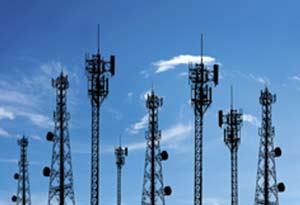Solar Power Solutions for Radio Antenna Tower Obstruction Lighting
Federal Communications Commission (FCC) and Federal Aviation Administration (FAA) standards require compliance with the lighting and marking of antenna towers.
For remote areas, solar power is the most reliable and cost-effective option. At SunWize Power & Battery, we deliver proven products designed for tough environments. Many of our systems operate in sparsely populated areas where grid power is limited, unreliable, or slow to restore after an outage.
Furthermore, our rugged off-grid solar battery systems help you meet aircraft safety requirements in any setting. Whether your towers are in densely lit cities or remote rural regions, we provide solutions tailored to your specific lighting needs.
In addition, FAA regulations demand continuous operation of obstruction lighting to protect both pilots and passengers. As a result, downtime is not an option. SunWize solar power systems deliver dependable, around-the-clock performance for FAA-regulated towers, even during extended grid outages or harsh weather. By combining durability with proven reliability, our systems keep your towers compliant, visible, and safe.
FAA and FCC Standards
The FCC and FAA outline specific requirements for obstruction lighting and tower markings. These standards vary by tower height and location. In turn, they reduce the risk of collisions in low-visibility conditions for low-flying aircraft. SunWize supplies power for a range of lighting and warning systems, including Whelen sirens. Key factors that influence lighting requirements include:
- Surrounding lights: A cell tower in the middle of a rural setting will not require the same lighting regulations as those in the middle of a large city.
- Height: The height of a tower determines the location of the lights, their intensity, and even their color (red beacons or lower-intensity white strobe lights).
- Other structures: Light placement must take in consideration other structures – as to avoid visual obstruction of the lights.
No matter what standards need to be met by a specific tower, solar power can both aid compliance with FCC/FAA standards and reduce overhead from power costs.
Applications
SunWize Power supplies remote solar battery power systems for federal agencies as well as telecommunications companies to meet individual environmental needs.
These systems may include:
– Radio towers
– Sirens
– Telecom towers
– Broadcast towers
– Meteorological towers
– Utility masts
– Security camera towers
– Cell towers
– Beacons for urban areas
– Aviation red obstruction lights
– Medium intensity flashing white obstruction lights
– High intensity flashing white obstruction lights
– Dual lighting
Remote solar battery power systems by SunWize are cost-effective and ruggedly designed for maximum lifespan and reliability. This ensures that your tower remains in full compliance with aircraft safety standards while eliminating concerns from outages and other power issues.
Advantages of Remote Solar Energy
SunWize remote solar battery power systems provide numerous advantages when used to light privately and federally owned antenna towers or siren warning systems:
– Solar panel charges a battery while powering the lights
– Battery power lasts several days when in use
– Reduces grid power consumption costs
– Allows for constant lighting 24/7
– Customized for specific power requirements due to lighting standards
Ready to Get Started?
Ready to get started with a solar powered system quote for tower applications? Click here to submit your loads to our system specifier worksheet and we'll respond with a quote!
Learn more about our turnkey systems for tower power application solutions.
Still haven't found what you need? Contact Us!
Telecommunication Case Studies
Quotation Process
Because lighting requirements for radio antenna towers vary, we recommend contacting our team for help designing a remote solar power system that fits your specific needs. Once you share your project’s power requirements, we will evaluate them and provide a detailed quote for a fully integrated system.



